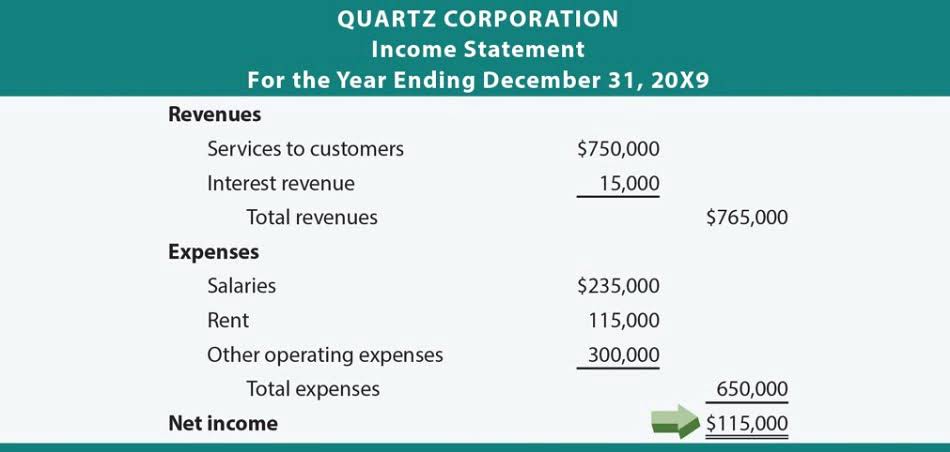
Appreciation and depreciation are two financial principles that apply to all assets. However, using specific accounting techniques listed below, they can be taken into account. These processes are required the cost principle is used: to account for any changes that occur. Because the cost principle states that assets should be recorded at their original cost, the balance sheet is easier to maintain. This is due to the fact that the value of an asset can change after it was purchased.
- This principle is a cornerstone of Generally Accepted Accounting Principles (GAAP) and International Financial Reporting Standards (IFRS).
- Generally Accepted Accounting Principles (GAAP) and considered a more conservative (and potentially more accurate) way to value large assets.
- Any depreciation of assets creates recurring tax benefits for business, as depreciation can be offset against the business’s income.
- In these cases, investors may be more interested in a company’s book value than its market value.
- It makes it mandatory for businesses to record raw asset prices, which marks its very original cost, unadjusted against any improvement or depreciation or with respect to the market value.
- The record would be the new vehicle cost as the cash paid and the trade-in vehicle value.
Asset Depreciation

By recording assets at their original purchase price, investors and creditors can evaluate a Certified Public Accountant company’s financial position and profitability with greater accuracy. To appreciate the cost principle’s depth, consider its alignment with other accounting principles like the monetary unit assumption. This assumption supports the recording of financial transactions in stable, unchanging currency units, facilitating comparability and financial integrity. The simultaneous application of the cost principle and monetary unit assumption ensures that financial statements are both objective and immune to inflationary effects.

Advantages of cost principle
A music company purchases the copyright to a movie from an independent filmmaker. The newly purchased asset should be recorded at the cost of the purchase itself. However, because the copyright is an intangible asset, it is not recorded on the balance sheet whatsoever. In Canada, to be GAAP compliant, the cost principle must be used.
Services
By following the Cost Principle, businesses can avoid overstatement of assets and income, accurately calculate depreciation and impairment, and provide a truthful representation of their financial position. The cost principle is a foundational concept in accounting, emphasizing the recording of an asset at its original purchase price. This method ensures that financial statements reflect the historical cost, not the current market value, of an asset over its lifespan. Recognizing these foundational aspects is crucial to understanding how financial information is prepared and used.
For example, while traditional methods might allocate electricity costs evenly across all products, ABC assigns these costs based on actual machine hours or specific production requirements. Over time, Activity-Based Costing has evolved significantly, becoming an integral part of modern accounting practices. When ABC was first introduced, it was a revolutionary way to move beyond the limitations of traditional costing methods, providing deeper insights into the cost structure of complex business processes. Today, its relevance has only heightened in an era where data drives decision-making.
Setting up ABC: A Step-by-Step Guide
When reviewing the worth of assets, appreciation is treated as a gain. The difference of the asset’s current worth and the original cost is recorded as a “revaluation surplus.” This can add net worth to a business over time if assets continue Bookkeeping for Chiropractors to appreciate. The realizable balance is the balance expected once the accounts are paid on. As such, the net balance for accounts receivable will fluctuate over time, like liquid assets will.
Definition and Examples of Cost Principle

The cost principle, also known as the historical cost principle, is an accounting convention that has been used for centuries to determine the value of assets and liabilities. The principle states that an asset should be recorded at the price paid to acquire it, and that a liability should be recorded at the amount owed to settle it. This principle is based on the belief that the cost of an item is the most objective and verifiable measure of its value.
- Many allegations were thrown around about the deal, which has hampered these companies’ profiles because the fair value was reduced significantly.
- As of now, the current value of Panaya and Skava is shown as $206 million in Infosys books.
- The cost of $25,000 is still recorded on the balance sheet, and the depreciation of $20,000 appears as ($20,000) on the statement.
- This principle emphasizes the importance of recording financial transactions based on the actual costs incurred at the time of acquisition, rather than adjusting for changes in market value over time.
- Despite its limitations, the cost principle remains a cornerstone of financial accounting, providing a foundation upon which other, more flexible, measures may be built.
When a real estate developer constructs a commercial building for $1 million, the cost principle dictates recording the building on the balance sheet at its historical cost of $1 million. If a manufacturing company buys machinery for $50,000, the cost principle mandates recording the machinery at its original cost of $50,000 on the balance sheet. The purpose of the cost principle is to ensure that financial statements record the original cost of a valuable asset.

Asset values are objective and can be easily verified.
The cost principle means items need to be recorded as the actual price paid. It is the same way when a buyer buys products, and the recording is done based on the price paid. In short, the cost principle is equal to the amount paid for each transaction.



